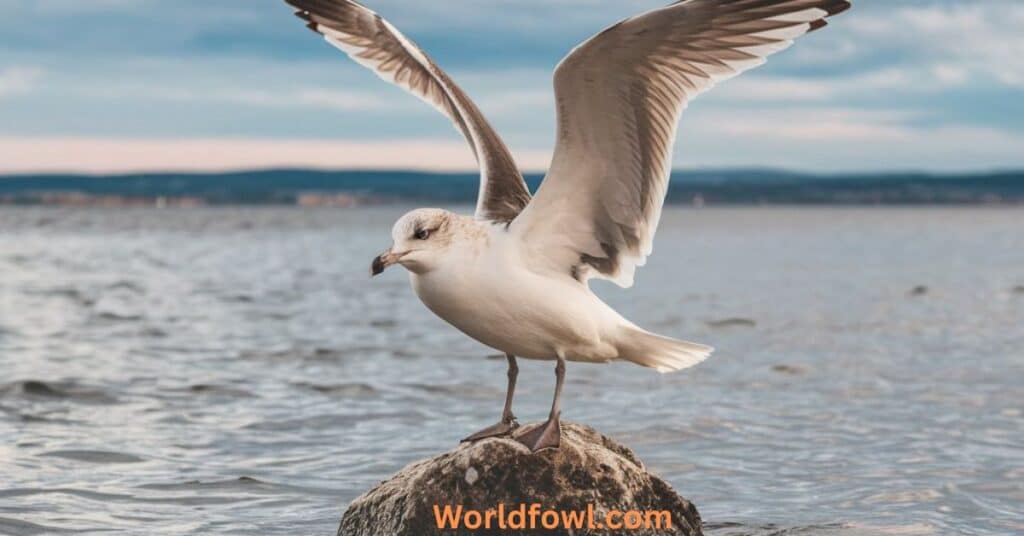Seagulls, those ubiquitous coastal birds, have long captivated our imagination with their graceful flight and raucous calls. But have you ever wondered about their relationship with the water below? Can seagulls breathe underwater? How do they manage their underwater activities? Let’s dive deep into the fascinating world of seagulls and their aquatic abilities, exploring the truths behind their underwater behaviors and dispelling common myths.
Introduction: The Seaside Acrobats
Picture a sunny day at the beach. The sound of waves crashing, the smell of salt in the air, and the unmistakable cries of seagulls overhead. These aerial acrobats are as much a part of the coastal landscape as the sand and sea. But there’s more to these birds than meets the eye. Seagulls have some surprising underwater capabilities that might just change the way you look at them.
Seagulls, belonging to the family Laridae, are found on coastlines around the world. While they’re primarily known for their flying skills, their relationship with water is equally fascinating. From diving for fish to floating peacefully on the ocean’s surface, seagulls demonstrate a remarkable adaptability to aquatic environments.
Seagulls and Underwater Breathing: Myth vs. Reality
Can seagulls breathe underwater?
Let’s tackle the big question right off the bat: can seagulls breathe underwater? The short answer is no, seagulls cannot breathe underwater. Like all birds, seagulls are air-breathing animals. They don’t have gills like fish, which means they can’t extract oxygen from water. This fact often surprises many people who observe seagulls’ comfort around and in water.
The myth of seagulls breathing underwater likely stems from their ability to stay submerged for short periods. However, during these underwater excursions, seagulls are holding their breath, much like humans do when we dive into a pool.
The anatomy of a seagull’s respiratory system
To understand why seagulls cannot breathe underwater, we need to take a closer look at their respiratory system:
- Lungs: Seagulls have highly efficient lungs that extract oxygen from the air. Unlike mammalian lungs, bird lungs don’t expand and contract. Instead, they have a constant volume.
- Air sacs: These unique structures help to increase the efficiency of oxygen extraction. Seagulls have nine air sacs that work in conjunction with their lungs.
- Trachea: The windpipe that carries air to and from the lungs. In seagulls, the trachea splits into two bronchi, which lead to the lungs.
- Nostrils: Located on the beak, these allow air to enter the respiratory system. Seagulls can close their nostrils while diving to prevent water from entering.
This system is designed for breathing air, not water. When a seagull dives underwater, it must hold its breath. The efficiency of their respiratory system allows them to extract more oxygen from each breath, which contributes to their ability to stay underwater for short periods.
you may like : Crane Vs. Heron – The Complete Comparison
How seagulls adapt to marine environments
While seagulls cannot breathe underwater, they have evolved several adaptations that allow them to thrive in marine environments:
- Water-resistant feathers: Seagulls have special oil-producing glands (uropygial glands) that coat their feathers, making them water-resistant. This adaptation is crucial for their aquatic activities.
- Efficient lungs: Their respiratory system allows them to extract more oxygen from each breath, enabling longer dives. This efficiency is due to the unique structure of their lungs and air sacs.
- Salt glands: These special glands, located near their eyes, help seagulls excrete excess salt, allowing them to drink seawater. This adaptation is crucial for their survival in marine environments where freshwater may be scarce.
- Streamlined body: Seagulls have a body shape that reduces drag in both air and water, making them efficient swimmers when needed.
These adaptations showcase the remarkable ways in which seagulls have evolved to live at the interface of air and sea, despite their inability to breathe underwater.
Seagulls’ Underwater Adventures
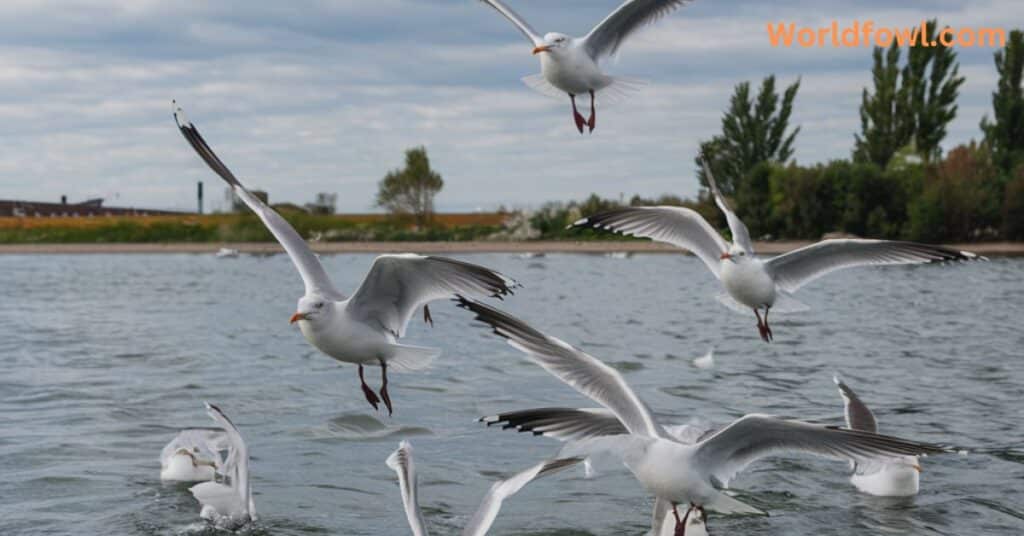
The extent of seagulls’ underwater excursions
While seagulls are primarily known for their aerial abilities, they do venture underwater. Seagulls go underwater for various reasons, primarily to catch food. However, their underwater excursions are typically brief and shallow compared to some other seabirds.
Most seagull species don’t dive deep or stay underwater for extended periods. Their dives are usually quick plunges from the air or surface dips. The depth and duration of these underwater forays can vary depending on the species and the individual bird’s experience.
Species variations in underwater behavior
Not all seagulls are created equal when it comes to underwater behavior. Different species have varying diving abilities and preferences. Here’s a comparison of some common seagull species and their diving abilities:
| Species | Diving Depth | Diving Duration | Diving Style |
| Herring Gull | Up to 1 meter | 5-10 seconds | Surface dipping, shallow plunge |
| Black-headed Gull | Up to 0.5 meters | 3-5 seconds | Surface dipping |
| Great Black-backed Gull | Up to 2 meters | 10-15 seconds | Plunge diving |
| Kittiwake | Up to 1.5 meters | 5-10 seconds | Surface dipping, shallow plunge |
| Bonaparte’s Gull | Up to 0.3 meters | 2-4 seconds | Surface dipping |
These variations in diving behavior are often related to the specific feeding habits and prey preferences of each species. For example, species that primarily feed on fish tend to have more advanced diving abilities compared to those that mainly scavenge or feed on surface-dwelling organisms.
Comparison with other seabirds’ diving abilities
When we compare seagulls to other seabirds, their underwater capabilities might seem less impressive. For instance:
- Penguins: Can dive up to 500 meters deep and stay underwater for up to 20 minutes. Emperor penguins hold the record for the deepest dive by a bird, reaching depths of 565 meters.
- Cormorants: Can dive up to 45 meters deep and stay underwater for up to 70 seconds. They are excellent swimmers and use their wings to “fly” underwater.
- Gannets: Can plunge-dive from heights of 30 meters, reaching depths of up to 15 meters. Their streamlined bodies and air sacs help them withstand the impact of hitting the water at high speeds.
- Puffins: Can dive to depths of 60 meters and stay underwater for up to 1 minute. They use their wings to swim underwater, appearing to “fly” through the water.
While seagulls may not be the champions of the diving world, their abilities are well-suited to their ecological niche. They have evolved to be generalist feeders, able to take advantage of a wide range of food sources both in the air and in shallow waters.
you may like : 24 Yellow Birds In Ohio With Photos
The Art of Holding Breath: Seagulls’ Underwater Endurance
Average breath-holding time for seagulls
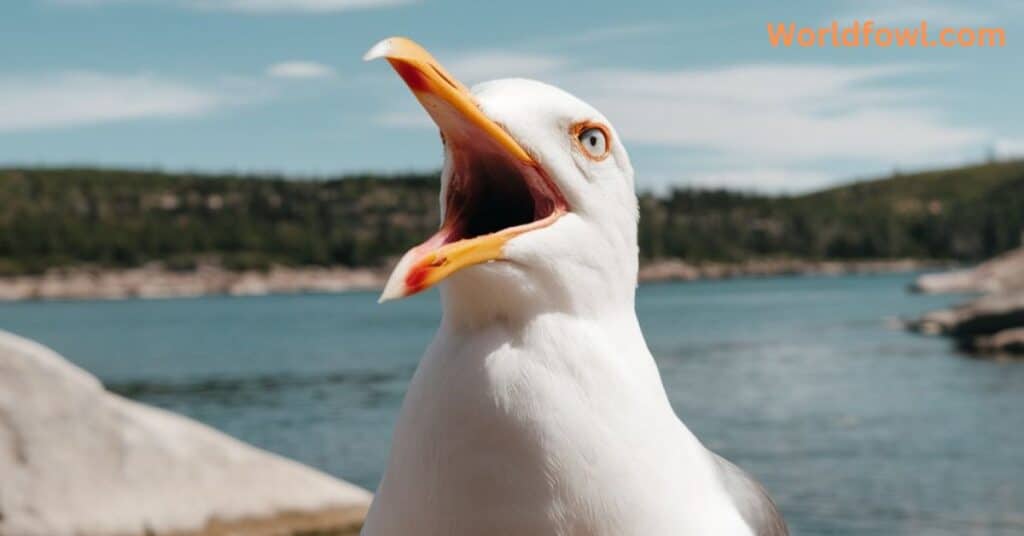
So, how long can seagulls hold their breath? On average, most seagulls can hold their breath for about 10 to 15 seconds. This might not seem like a long time, but it’s sufficient for their feeding habits, which typically involve quick dips or shallow plunges.
It’s important to note that this breath-holding time can vary depending on the species and individual bird. Some larger gull species, like the Great Black-backed Gull, may be able to hold their breath for slightly longer periods.
Factors affecting breath-holding capacity
Several factors can influence how long seagulls hold their breath:
- Species: Larger gull species generally have a greater lung capacity, which can contribute to longer breath-holding times.
- Age: Adult gulls typically have better breath-holding abilities than juveniles. This is due to their more developed physiology and greater experience with diving.
- Physical condition: Healthier birds can usually hold their breath longer. Factors like overall fitness and the absence of respiratory diseases play a role.
- Water temperature: Colder water can sometimes allow for slightly longer dives. This is because colder temperatures can slow down metabolism, potentially reducing oxygen consumption.
- Diving purpose: Gulls may hold their breath longer when actively pursuing prey compared to casual dips in the water.
- Depth of dive: Shallow dives typically require less time underwater, while deeper dives for prey may push a gull to its breath-holding limits.
- Stress levels: A stressed gull may not be able to hold its breath as long as a calm one, as stress can increase oxygen consumption.
How seagulls compare to other birds in breath-holding
While seagulls’ breath-holding abilities are impressive for their size and lifestyle, they pale in comparison to some diving specialists:
- Emperor Penguins: Can hold their breath for up to 20 minutes
- Puffins: Can stay underwater for up to 1 minute
- Cormorants: Can hold their breath for up to 70 seconds
- Gannets: Can stay submerged for up to 30 seconds
It’s worth noting that these birds have evolved specifically for underwater foraging, unlike seagulls which are more generalist feeders. Seagulls’ breath-holding abilities are well-suited to their feeding strategies, which typically involve surface feeding or shallow dives.
Fishing Techniques: The Seagull’s Dive
Different diving strategies employed by seagulls
Seagulls dive for fish using various techniques, each adapted to different prey and environmental conditions:
- Surface dipping: This is the most common technique. Seagulls skim the water’s surface, dipping their bills to snatch prey just below the surface. This method is energy-efficient and low-risk.
- Shallow plunge-diving: Some gull species, like the Herring Gull, perform shallow plunge dives. They dive from a short height into shallow water, submerging briefly to catch prey.
- Kleptoparasitism: While not a diving technique per se, some gulls are known to steal fish from other birds or animals. They might harass diving birds like terns or puffins, forcing them to drop their catch.
- Contact dipping: In this technique, gulls fly low over the water, touching the surface with their feet or bill to startle fish, making them easier to catch.
- Foot-pattering: Some gulls paddle their feet on the water’s surface while floating, creating disturbances that attract prey to the surface.
you also like : 8 Owls In Tennessee – The Complete List (With Photos)
The physics behind a seagull’s plunge
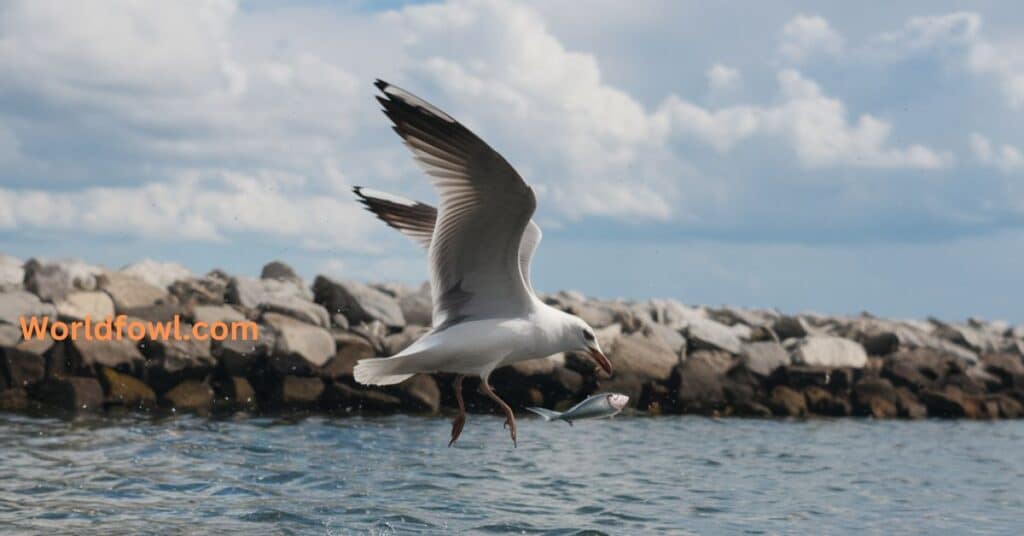
When a seagull plunge-dives, it uses gravity to its advantage. Here’s how it works:
- The gull spots a fish from the air, using its keen eyesight to locate prey beneath the water’s surface.
- It folds its wings back and drops like a stone. This streamlined position reduces air resistance and increases diving speed.
- Just before impact, it slightly opens its wings to control the dive. This subtle adjustment helps the gull aim more precisely at its target.
- It enters the water with minimal splash, reducing drag. The gull’s streamlined body shape helps it penetrate the water smoothly.
- Underwater, it uses its wings and feet to pursue the prey. While submerged, the gull can make quick adjustments to its trajectory using its wings and webbed feet.
- After catching the prey (or if unsuccessful), the gull uses its buoyancy and a few wing strokes to return to the surface.
This entire process happens in a matter of seconds, showcasing the remarkable speed and precision of seagulls’ diving abilities.
Adaptations that aid in underwater fishing
Seagulls have several adaptations that help them fish underwater:
- Binocular vision: Helps in accurately judging the distance and location of prey. Seagulls’ eyes are positioned to give them excellent depth perception, crucial for timing their dives.
- Streamlined body: Reduces drag underwater, allowing for more efficient movement. The sleek shape of a gull’s body helps it slip through the water with minimal resistance.
- Strong legs and webbed feet: Aid in propulsion underwater. While not as specialized as diving birds like cormorants, gulls can use their feet to maneuver and propel themselves while submerged.
- Sharp, hooked beak: Perfect for grasping slippery fish. The shape of a gull’s beak allows it to securely hold onto prey once caught.
- Flexible neck: Allows for quick, precise movements to snatch prey. The ability to rapidly extend and retract their necks gives gulls an advantage in catching fast-moving fish.
- Nictitating membrane: A transparent third eyelid that protects the eye underwater while still allowing vision. This adaptation is crucial for spotting and pursuing prey while submerged.
These adaptations, combined with their diving techniques, make seagulls effective predators in shallow marine environments.
Seagulls as Swimmers: More Than Just Flyers
Swimming capabilities of seagulls
Contrary to what some might think, seagulls can swim quite well. While they’re not as adept as ducks or geese, seagulls swim with ease on the water’s surface and can even swim underwater for short distances.
Seagulls’ swimming abilities are often overlooked due to their reputation as flying birds. However, their comfort in the water is a testament to their adaptability. They can paddle efficiently using their webbed feet, and their waterproof feathers help them stay buoyant and dry.
you may like : Do Robins Mate For Life? The Complete Guide To Robin Romance
How seagulls use swimming in their daily lives
Swimming plays a crucial role in seagulls’ lives:
- Feeding: Swimming allows them to reach food sources in the water. They can paddle to areas where fish or other prey are abundant, increasing their foraging success.
- Resting: Seagulls often rest on the water’s surface between flights. This behavior, known as “rafting,” is common among seabirds and helps conserve energy.
- Bathing: Swimming helps seagulls keep their feathers clean. They use water to wash off salt, dirt, and parasites, maintaining the health and water-resistance of their plumage.
- Avoiding predators: In some cases, seagulls may swim to escape land-based predators. Being able to take off from the water’s surface gives them an additional escape route.
- Courtship: Some gull species incorporate swimming into their courtship displays, showcasing their fitness to potential mates.
- Thermoregulation: On hot days, seagulls may swim to cool off, using the water to regulate their body temperature.
The role of webbed feet in swimming and diving
Seagulls’ webbed feet are a key adaptation for their aquatic lifestyle:
- Propulsion: The webs between their toes act like paddles, propelling them through water. When swimming, gulls push their feet backward, spreading their toes to maximize the surface area of each stroke.
- Steering: Seagulls can use their feet to change direction while swimming. By altering the angle and force of their foot strokes, they can make precise movements in the water.
- Diving: When diving, seagulls use their feet to help push them deeper into the water. The webbed structure provides extra surface area for this downward thrust.
- Surface tension: The large surface area of webbed feet helps distribute the gull’s weight when walking on soft surfaces like mud or floating debris.
- Take-off assistance: Webbed feet can help seagulls gain momentum when taking off from the water’s surface, acting like small paddles to propel them forward.
While not as specialized for swimming as some other seabirds, seagulls’ webbed feet are a versatile tool that contributes significantly to their success in aquatic environments.
Floating Feathers: Seagulls on the Water’s Surface
How seagulls stay afloat
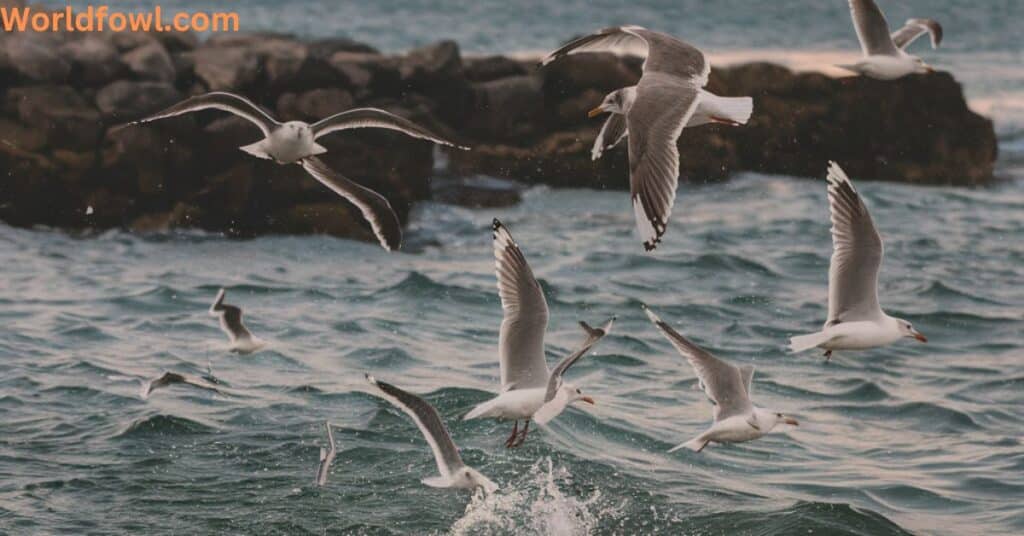
Seagulls float on water with remarkable ease. This ability comes from a combination of factors:
- Buoyant body: Seagulls have hollow bones and air sacs that increase buoyancy. These adaptations, primarily evolved for flight, also serve them well on the water.
- Water-resistant feathers: Their feathers repel water, trapping air and enhancing buoyancy. This waterproofing is crucial for maintaining body temperature and staying afloat.
- Body positioning: Seagulls can adjust their position to maintain balance on the water. They can shift their weight and slightly spread their wings to stabilize themselves in choppy conditions.
- Low body density: The overall density of a seagull’s body is lower than that of water, thanks to their air sacs and hollow bones, allowing them to float naturally.
The science behind water-resistant feathers
Seagulls’ water-resistant feathers are a marvel of natural engineering:
- Preening gland: Also known as the uropygial gland, this gland produces oil that the gull spreads over its feathers during preening. This oil forms a waterproof coating on the feathers.
- Feather structure: The feathers have a complex structure that helps repel water. Each feather has a central shaft with barbs branching off on either side. These barbs have even smaller structures called barbules with tiny hooks.
- Microscopic hooks: The tiny hooks on the barbules interlock, creating a water-resistant barrier. This interlocking structure is what gives feathers their smooth appearance and water-repelling properties.
- Hydrophobic properties: The combination of feather structure and preening oil creates a surface that water cannot easily penetrate. Water beads up and rolls off the feathers instead of soaking in.
Buoyancy techniques used by seagulls
Seagulls float using various techniques:
- Air trapping: They can trap air in their feathers to increase buoyancy. By fluffing their feathers slightly, they create tiny air pockets that enhance their floating ability.
- Body positioning: By adjusting their position, they can control how much of their body is submerged. Seagulls can sit higher in the water by keeping their feathers slightly raised, or lower themselves by compressing their feathers.
- Paddling: Light paddling with their webbed feet helps maintain position and buoyancy. This subtle movement can help counteract any sinking tendency and keep the gull at the desired level in the water.
- Wing adjustments: Slight adjustments to wing position can help balance the bird on the water’s surface, especially in windy or choppy conditions.
- Head positioning: By moving their head and neck, seagulls can fine-tune their balance on the water, much like a tightrope walker uses a balance pole.
These buoyancy techniques, combined with their physical adaptations, allow seagulls to rest comfortably on the water’s surface for extended periods, conserving energy between flights or foraging activities.
Seagulls’ Aquatic Resting Habits
Do seagulls sleep on water?
Yes, seagulls sleep on the water. This behavior, known as “rafting,” is common among many seabirds. Seagulls can sleep while floating on the water’s surface, often in large groups. This ability to rest on water is a crucial adaptation that allows them to stay out at sea for extended periods.
When sleeping on water, seagulls enter a state of half-sleep, where one brain hemisphere remains alert while the other rests. This unihemispheric slow-wave sleep allows them to stay vigilant for predators or changes in weather conditions while still getting necessary rest.
The risks and benefits of aquatic resting
Sleeping on water offers several advantages:
- Safety from land predators: By resting offshore, seagulls can avoid many terrestrial predators that might threaten them on land.
- Easy access to food sources: Staying on the water keeps them close to their marine food sources, allowing for quick foraging when they wake.
- Energy conservation: Floating requires less energy than flying to and from distant roosting sites on land.
- Thermoregulation: Water can help regulate body temperature, especially in hot climates.
However, it also comes with risks:
- Exposure to marine predators: While safer from land predators, seagulls sleeping on water may be vulnerable to aquatic predators like large fish or sharks.
- Vulnerability to harsh weather conditions: Strong winds or sudden storms can be dangerous for birds resting on open water.
- Risk of drifting away from preferred areas: Ocean currents might carry sleeping gulls away from their usual territories.
- Potential for waterlogging: Extended periods in water, especially if feathers are not properly maintained, could lead to waterlogging.
How seagulls maintain body temperature while on water
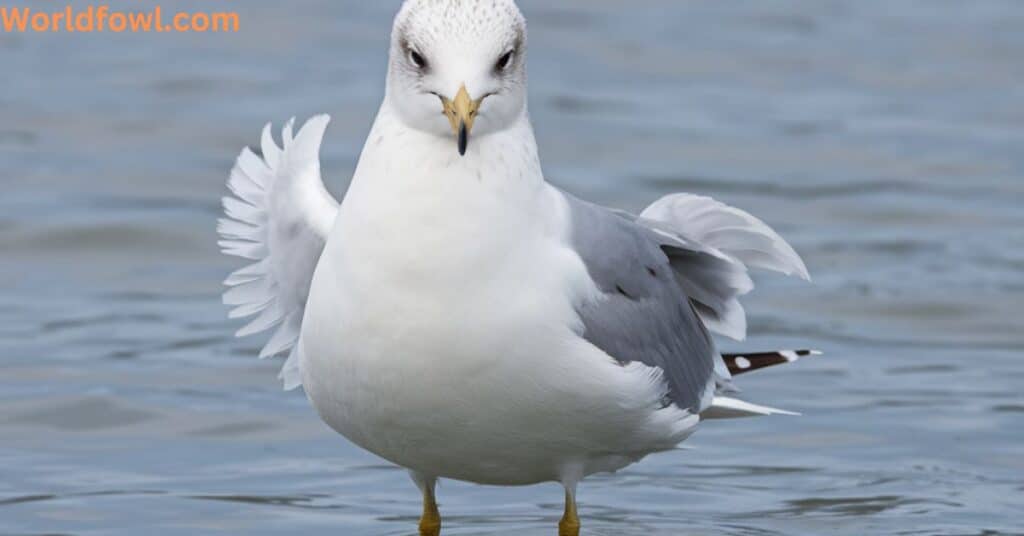
Seagulls have several adaptations to maintain their body temperature while resting on water:
- Waterproof feathers: These prevent water from reaching the skin, creating an insulating layer of air trapped within the feathers.
- Countercurrent heat exchange: A special circulatory system in their legs helps conserve heat. Warm blood flowing to the feet passes close to cold blood returning from the feet, warming it up before it reaches the body core.
- Tucking behavior: Seagulls can tuck their bills and feet into their feathers to reduce heat loss from these extremities.
- Huddling: When rafting in groups, seagulls may huddle together to share body heat, similar to penguins.
- Increased metabolism: In colder conditions, seagulls can increase their metabolic rate to generate more body heat.
- Behavioral thermoregulation: Seagulls may adjust their position relative to the sun or wind to optimize heat gain or loss as needed.
These adaptations allow seagulls to comfortably rest on water in a variety of weather conditions, showcasing their remarkable ability to thrive in the challenging interface between air and sea.
you may like : Finches In Texas – The Complete Guide To Texas Finches
Seagulls’ Underwater Survival Strategies
How seagulls avoid drowning
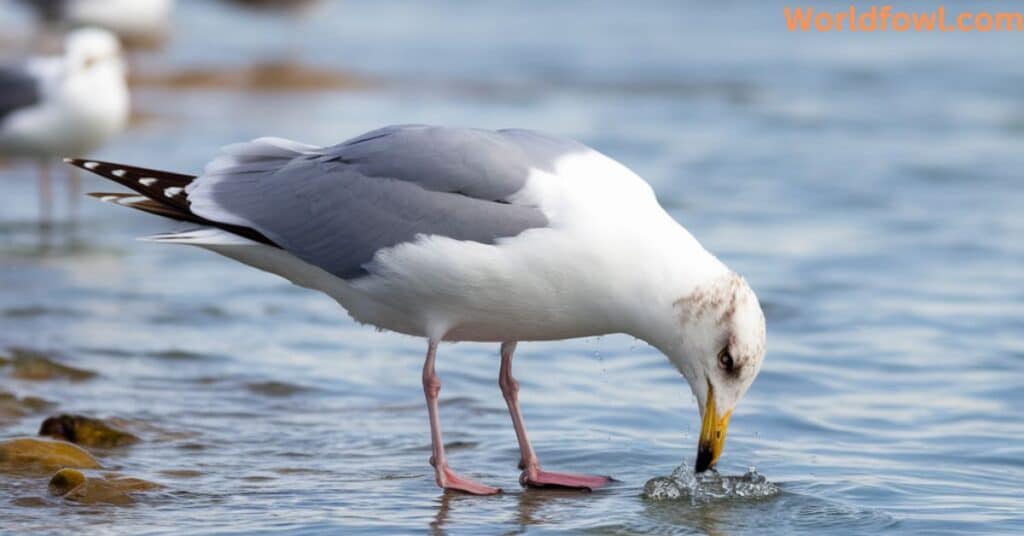
While seagulls cannot breathe underwater, they have several strategies to avoid drowning:
- Controlled diving: They only dive to depths they can quickly return from. Seagulls are aware of their limitations and typically don’t attempt dives beyond their capabilities.
- Efficient oxygen use: Their respiratory system allows for efficient oxygen extraction, enabling them to make the most of the air in their lungs during dives.
- Buoyancy control: They can quickly return to the surface using their natural buoyancy. Seagulls can adjust their body position and use their wings to ascend rapidly if needed.
- Short dive durations: Most seagull dives last only a few seconds, minimizing the risk of running out of air.
- Surface breathing: Between dives, seagulls take quick breaths at the surface, replenishing their oxygen supply.
Physical adaptations for aquatic survival
Seagulls have evolved several physical adaptations for their semi-aquatic lifestyle:
- Waterproof feathers: Keep them dry and buoyant. The structure of their feathers and the oil from their preening gland create a water-resistant barrier.
- Webbed feet: Aid in swimming and diving. The webbing between their toes provides excellent propulsion in water.
- Salt glands: Allow them to drink seawater. These specialized glands near their eyes excrete excess salt, enabling seagulls to maintain proper hydration even when drinking saltwater.
- Streamlined body: Reduces drag in water. Their sleek body shape allows for efficient movement both in air and water.
- Flexible neck: Allows for quick, precise movements to catch prey underwater.
- Nictitating membrane: A transparent third eyelid that protects the eye underwater while still allowing vision.
Behavioral strategies to prevent water-related dangers
Seagulls employ various behaviors to stay safe in and around water:
- Group rafting: Sleeping in groups on water for increased safety. More eyes mean better predator detection.
- Careful dive timing: Avoiding dives in rough seas or strong currents. Seagulls are adept at reading water conditions and choose their diving spots wisely.
- Quick surface returns: Minimizing time spent underwater. This reduces the risk of running out of air or encountering underwater predators.
- Preening: Regular feather maintenance to ensure water resistance. This behavior is crucial for maintaining the waterproofing of their feathers.
- Vigilant resting: Even when resting on water, seagulls remain alert to potential dangers.
- Learning from experience: Young seagulls often learn water safety behaviors by observing adults and through trial and error.
- Avoiding oil-contaminated waters: Seagulls tend to avoid areas with visible oil slicks, which can damage their waterproofing.
These physical adaptations and behavioral strategies work together to ensure seagulls’ survival in their challenging coastal and marine environments.
The Impact of Climate Change on Seagulls’ Aquatic Behaviors
Changing ocean conditions and their effects
Climate change is altering the marine environments that seagulls depend on:
- Rising sea temperatures: Affecting fish populations and distribution. As waters warm, traditional prey species may move to cooler areas or decline in numbers.
- Changing ocean currents: Impacting food availability. Shifts in currents can affect the distribution of nutrients and plankton, which in turn affects the entire marine food web.
- Sea level rise: Altering coastal habitats. Rising seas can flood low-lying nesting areas and change the shoreline dynamics that seagulls rely on.
- Increased storm frequency and intensity: More extreme weather events can disrupt feeding and nesting patterns.
- Ocean acidification: Affecting the marine food web. As the ocean absorbs more CO2, it becomes more acidic, potentially impacting shellfish and other prey species.
Adaptations in seagull behavior due to environmental shifts
Seagulls are showing signs of adapting to these changes:
- Altered migration patterns: Some species are changing their migration routes or timing to align with shifting food availability.
- Diet shifts: Seagulls are incorporating new prey items as traditional food sources become scarce. This may include more terrestrial food sources or different marine species.
- Breeding timing changes: Some gulls are nesting earlier in response to changing seasons and food availability patterns.
- Range expansions: Some gull species are expanding their ranges northward as temperatures warm.
- Increased scavenging behavior: With traditional food sources under pressure, some gulls are relying more heavily on human-provided food sources.
- Changes in diving behavior: Alterations in prey distribution may lead to changes in diving depths or frequencies.
Conservation efforts to protect seagull habitats
Various initiatives are underway to protect seagulls and their habitats:
- Marine protected areas: Establishing safe zones for seabirds, protecting crucial feeding and nesting areas.
- Plastic pollution reduction: Efforts to reduce marine debris that can harm seagulls through entanglement or ingestion.
- Climate change mitigation: Broader efforts to combat global warming, including reducing greenhouse gas emissions and promoting renewable energy.
- Habitat restoration: Projects to restore coastal habitats and nesting sites.
- Fishing regulations: Implementing fishing practices that reduce seabird bycatch and protect fish stocks.
- Public education: Raising awareness about seagull conservation and the impacts of human activities on marine ecosystems.
- Research and monitoring: Ongoing studies to better understand seagull behavior and how they’re adapting to changing conditions.
These conservation efforts are crucial for ensuring the long-term survival of seagulls and maintaining the health of marine ecosystems.
Conclusion:
Seagulls, while primarily known for their aerial prowess, have proven themselves to be remarkably adaptable to aquatic environments. From their ability to swim and float to their impressive, if brief, underwater excursions, seagulls demonstrate a versatility that spans both air and sea.
While they cannot breathe underwater, seagulls have evolved a suite of physical and behavioral adaptations that allow them to thrive in coastal and marine habitats.
The underwater abilities of seagulls, though not as spectacular as some diving specialists, are finely tuned to their ecological niche. Their quick plunges and surface dips are perfectly suited for catching fish near the water’s surface, while their ability to rest on water allows them to conserve energy and stay close to food sources.
As we face the challenges of a changing climate, understanding the behaviors and adaptations of seagulls becomes increasingly important. These birds serve as indicators of ocean health and play crucial roles in marine ecosystems. Their ability to adapt to changing conditions offers both hope and concern – while it showcases their resilience, it also highlights the rapid changes occurring in our oceans.
Conservation efforts aimed at protecting seagulls and their habitats are not just about preserving a single species. They’re about maintaining the delicate balance of coastal and marine ecosystems.
The next time you’re at the beach and spot a seagull diving into the waves or floating serenely on the water’s surface, take a moment to appreciate the remarkable abilities of these seaside acrobats. They’re not just masters of the air, but skilled navigators of the sea as well.
In a world of rapid environmental change, seagulls remind us of the importance of adaptability and resilience The story of seagulls and their underwater abilities is not just about bird behavior – it’s a window into the complex and beautiful world of marine ecology, and a call to action for its preservation.

Henry James is a seasoned blogger and a passionate storyteller on “World Fowl.” With years of experience crafting engaging content, he brings a unique blend of expertise and creativity to his writing. Henry specializes in exploring diverse topics with depth and clarity, captivating readers worldwide.

